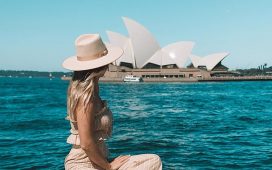I am sitting on the roof of the True North II, nine metres above the water. The skipper, Simon Hanrahan, isn’t thrilled about my being here — he thinks I’ll trip over a rope and hurt myself — but it’s become a retreat: at night for the stars, during the day for the breeze.
My day has been full of wonders and I’m gazing at a blue-on-blue seascape, cut only by a slash of white sand. Three of the crew — Jess, Courtney and Dee — emerge from the hatch and ask if I want to jump the three storeys into the sea below. I get up and gaze down at the circling sharks while Jess makes the count. We run into the blood-warm air.
Tooling around Broome a few days before, I’d been worried that this four-day, five-night trip would be more cruise than adventure. Then I watched a film about True North and its founder, Craig “Craigo” Howson, whose own brother describes him as an “absolute lunatic” and “loose unit”.
Howson had arrived in Broome, a red-dirt town founded on pearling, in the late 1980s. He’d come with a new boat that he’d built as a tender for True North, one of the yachts the Canadian team had brought over for the 1987 America’s Cup, held off Freemantle. The Canadians had given him the tender afterwards and he saw tourist opportunities in the Kimberley, the red-earth fingers that reach out of Australia’s far north-west into the Timor Sea.
It’s hard country with a brutal history. “When Craigo started coming up to the Kimberley, he was still using charts made by the explorer Phillip Parker King in 1821,” says Dee Whyte, who works with him. In the film, Howson puts it differently: “We charted the Kimberley by hitting every rock.”
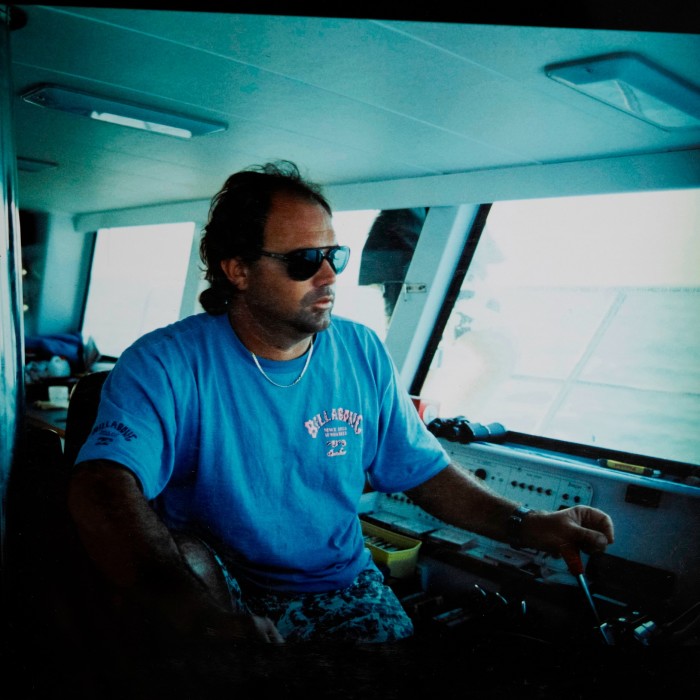
I drove to the tip of the Dampier peninsula to take a look. It’s a world of whales and wild tides. I took a shore walk with Terry Hunter, one of the indigenous guides changing tourism in Australia.
Terry covered a rock exposed by the low tide with spinifex, the grass that edges the sea, and set fire to it. Soon we were picking freshly smoked oysters off the rock. He told me that the early pearlers used pregnant Aboriginal teenagers to dive for the shells from which they harvested mother of pearl.
Terry is a descendant of one of those girls. “The Europeans said when women are pregnant, their lungs are inflated, so they could stay down longer. My great-grandfather Harry was a blackbirder. Which is just another word for slaver. But on the other side I’m Yindjibarndi.”
This was the world into which Craigo took his boat, piloting it up mystical rivers such as the Prince Regent, past saltwater crocodiles sunning themselves on the banks, pushing the prow under the waterfall at Kings Cascades so his clients could shower. His name was made when wildlife documentary makers Malcolm Douglas and Steve Irwin, both soon friends, arrived to make films.
Thirty years on, the Kimberley remains True North’s bread and butter, but I am heading in a different direction, to a place only a few hundred people get to see each year.
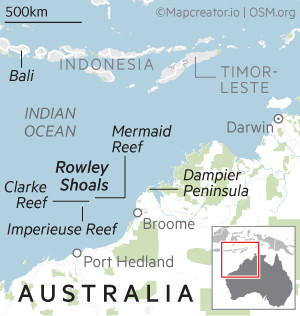
Twenty-one guests — a random collection of Australians of various ages, and Brianne, a New Zealander obsessed with diving — wait on the beach in Broome for a flotilla of tenders — “tinnies” — to pull up.
Ryan O’Dea helps me into one. We pull out, passing a vast ship being loaded with cattle, and I notice “Tugg” and “Life” tattooed on Ryan’s feet. Are these a misspelt tribute to Tupac Shakur, I ask, and he winces, saying: “I captained a tug boat when I was younger.”
Eventually we close on a squat, ferry-like shape, the 34m True North II. It was the first boat Howson designed specially for his business. It has twin keels — “so we can drive it on to the beach”, says skipper Simon — and a very shallow draft. “In some of the river creek systems, we only have about 10 centimetres of water underneath the hull,” he adds.
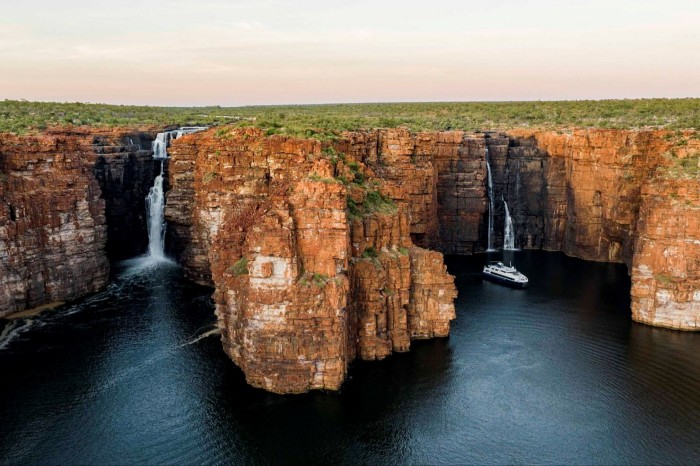


Onboard, True North II’s purpose becomes obvious. Fishing rods line the roof, scuba gear the walls, paddle boards are stacked upfront, and there are buckets full of snorkelling gear, each with a guest’s name.
The crew hoist the tenders onboard and, before we’ve had a chance to finish our first cocktails, we’re heading west, a night’s sail of 170 nautical miles to the edge of Australia’s continental shelf.
The ship can carry up to 22 guests in 11 cabins, and there are 14 crew. I’m down in the bilges, in a pale room with a bunk and a porthole from which I can see the water rushing past. There are staterooms above with picture windows, but I’m happy. I have a good shower, the sheets are soft, and I fall into a sleep filled with vivid dreams. By the time the sun rises, blue sea has replaced red earth, and ahead of us lies a slight irregularity in the water.

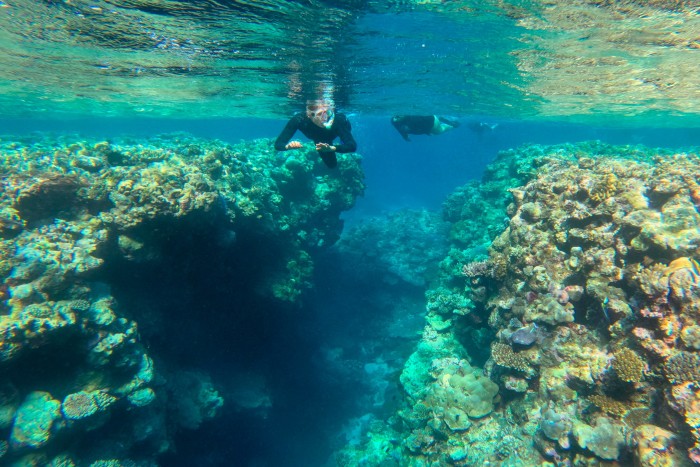
The Rowley Shoals consist of three coral reefs, hard by the continental drop-off. We’re approaching the middle one, Clerke Reef. They are relatively unknown, except among divers as one of the finest places to scuba and snorkel anywhere.
“The warm and clear Indonesian current comes all the way down from the equator, to wash over them,” says Ty Peppernell, the dive master. This means there are soft corals as well as hard ones, and 688 species of fish. “The Great Barrier Reef is famous because it’s big, but this is more beautiful and healthier, and there is no one else here.”
Full of fruit, coffee, and eggs Benedict prepared by the chefs, Luke Pursell and Jasper Aberra, we collect on the sofas to hear the plans for the day. While these could be snorkelling, hanging out on the 1.6km strip of sand to gaze at rare red-tailed tropicbirds, fishing offshore for sailfish and tuna, most of us choose scuba.
Still outside the reef, we follow Ty down the anchor chain to 22 metres. I lie on the bottom looking up at all the pretty bubbles rising through the blue, but my ears are crinkling.
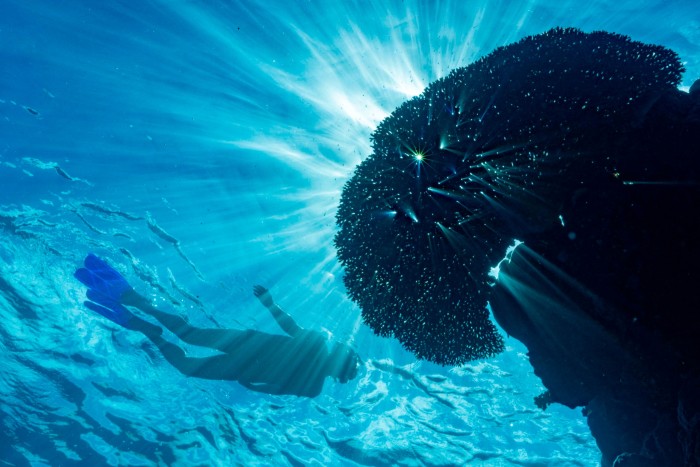
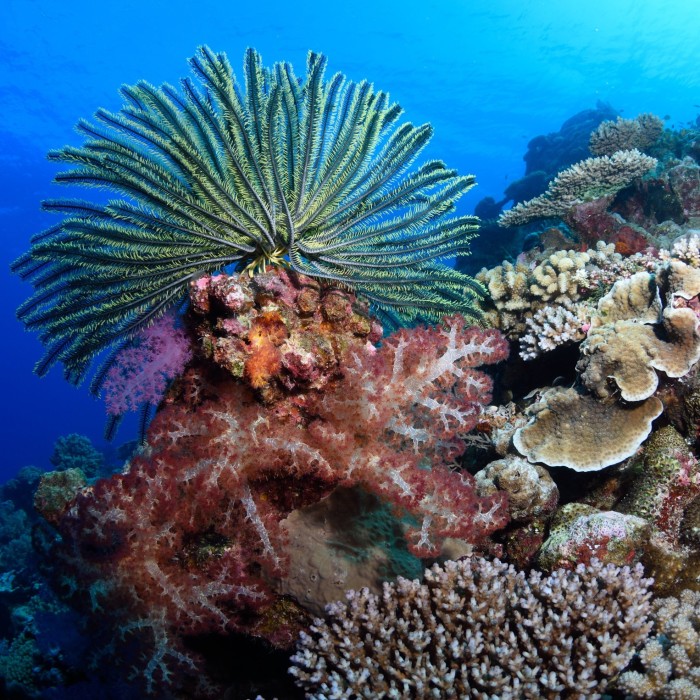

Back on board I find Simon at a control panel on the bow. I mention my problem with my ears and he says to try the snorkelling, which he thinks is just as good but without all the rigmarole. Then he points ahead and I realise he’s about to take the boat through a worryingly narrow channel in the reef.
It’s the slack of high tide, and the channel dog-legs as it enters the lagoon or, as the crew call it, “the aquarium”. It’s enthralling driving, and as we hook up to the mooring I finally look around. We are alone.
After a sashimi lunch, I get into a tinny piloted by Nat Hourn with our guest director Summer Lyon on the bow. They strike a suitably Odyssean note, his thick torso tattooed with nautical things such as the kraken enveloping a barque, she with the elegance of a mermaid in the water.
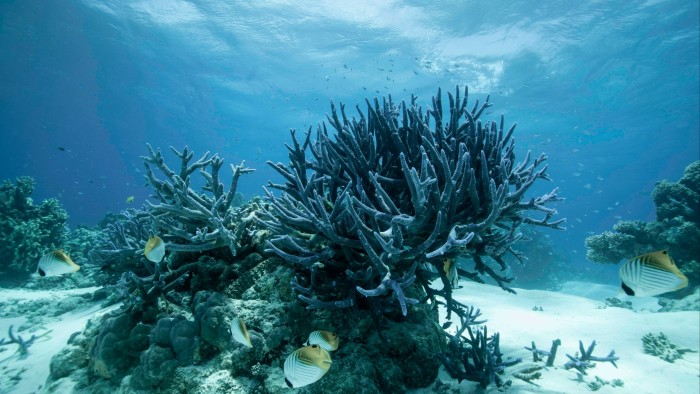

The coral is split by fissures through which we swim. I breathe in as I cross shallow plains, before the bottom drops away to depths I’d struggle to dive to, but with water so clear you can see all the way.
I follow triggerfish that look like surprised party balloons with Ken Dodd teeth. I watch wrasse beautify their clients at cleaning stations, the collaborative pit stops where these extraordinary creatures nibble away parasites from their fellow reef fish. I trail bumphead parrotfish as they nip off coral, expelling it in puffs of perfect white sand.
We’re in no hurry. I start seeing the smallest things (improved again by an excellent evening lecture from Ty). I watch angelfish hide in their anemones, coral trout lying in ambush under plate coral, reef sharks lounging on the bottom.
Brianne, the New Zealander, tells me the diving is spectacular. “You’ve got walls of soft coral and big sharks,” she says. “But it’s a lot deeper and a lot more challenging than I expected.” Ty tells me there are days when schools of big tuna come past and you feel very small.
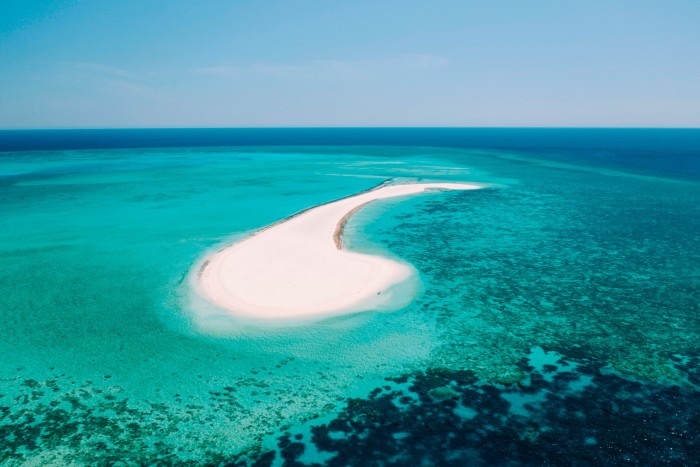
True North II is not Howson’s biggest boat. That is True North, 50 metres long, with room for 36 passengers. Both boats circumnavigate Australia over the course of the year, but he constantly searches for new adventures, so they detour north to Raja Ampat in Indonesia and to the Sepik river in Papua New Guinea.
The company turns out to be one of the most interesting adventure operators I’ve encountered, but remains obscure beyond its native land. “We try to keep it, I would say, a little bit Australian,” says Summer.
This is evident at dinner. One night I sit beside two couples from the northern suburbs of Sydney at the boat’s big table, beef cheek croquettes in front of us. Mike, Kathy, Andrew and Melissa are old friends. The men and women separate to each side. “Aw,” says Kathy. “Australian barbecue rules, is it?”
One afternoon, I ask to be dropped off on the island. While I can’t get excited by trolling after sailfish offshore, I’m an obsessive fly-fisherman and want to see what species I might have targeted if the area inside the reef wasn’t a protected marine park.
I follow mudding rays and see triggerfish, tail up, chasing crabs. Occasionally I look at the centre of the island where the red-tailed tropicbirds breed. These looping long-tailed creatures are a species, like pandas, too beautifully dumb for the world, and this is one of the last spots they can nest (the shoals also have a slew of endemic species).
My lonely walk triggers sympathy in the crew. Cooper Chapman tells me that if I’m prepared to forgo Luke’s lunch for a sandwich, he’ll take me to a small area inside the reef where catch-and-release fishing is permitted.
He is long, stringy and as obsessive as I am. We pass over the calm lagoon, watching a school of trevally push through an area where we cannot fish. Finally we begin to drift over coral heads. Coral trout scorch from the depths to attack our lures, stunningly beautiful fish, freckled like leopards. I release them as soon as they reach the boat, but then I hook a big one and it dives into the stag coral below.
Cooper looks into the water. I hand him the rod and dive in, following the line down five metres, my lungs burning when I finally free the trout. “You don’t see that every day,” Cooper laughs as I pull myself onboard.
Sunset finds me on the roof of the True North II. This is when Jess, Courtney and Dee arrive to suggest we jump off the edge. It occurs to me, as I get ready, that the boat’s crew seem hell-bent on getting me out of perfectly comfortable boats.
We run into space. The fall takes a long second and I look around, astonished once again that we’re utterly alone.
Details
Ruaridh Nicoll was a guest of Tourism Western Australia (westernaustralia.com) and True North (truenorth.com.au). A four-day, five-night trip to Rowley Shoals starts at A$6,595 (£3,400) per person
Find out about our latest stories first — follow FTWeekend on Instagram and X, and subscribe to our podcast Life and Art wherever you listen

